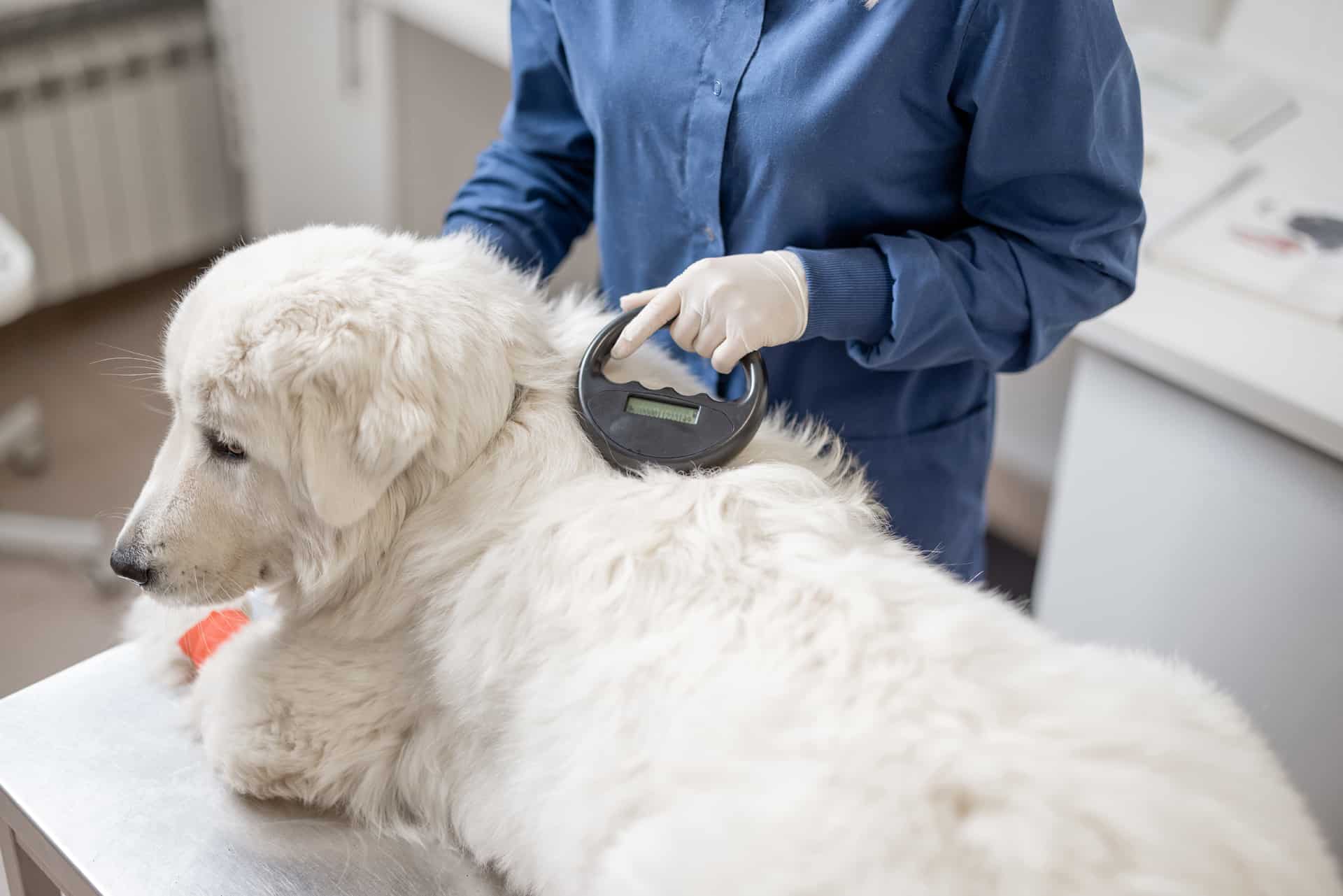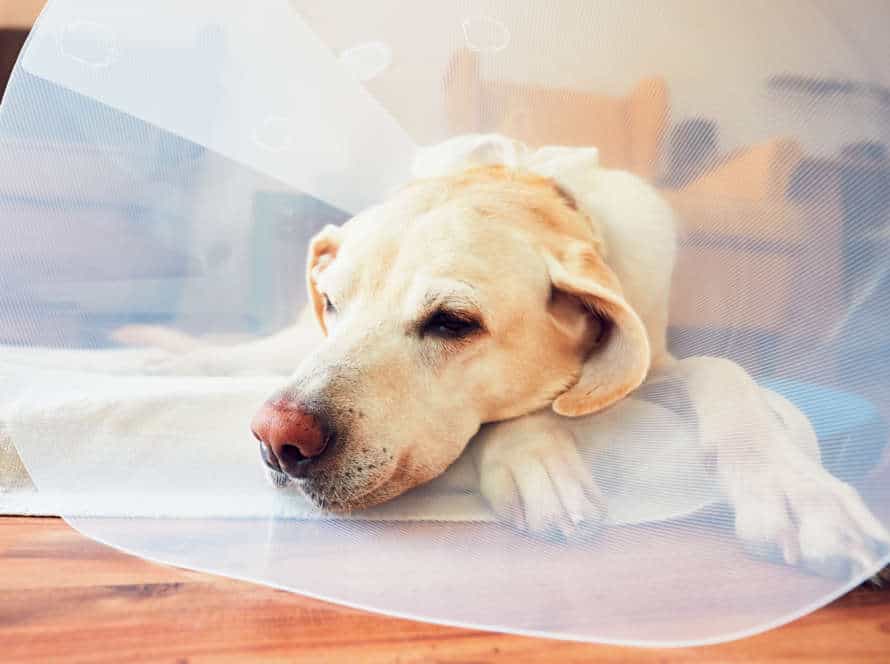The Benefits of Microchipping Your Dog
Microchipping your pup has many benefits. To start, it’s a permanent way to identify them. Unlike tags and collars, the chip stays put. This makes it easier to find lost or stolen dogs and get them back to their owners. Plus, the procedure is simple and not too painful. Usually, it’s done by a vet. Additionally, many shelters and rescues need microchipping for adoption. Lastly, it’s relatively affordable. The one-time cost gives you peace of mind that your pup is identifiable.
Why Microchipping Your Dog is Important
Microchipping your pooch can be amazing! It’s a cost-effective and straightforward process that can help you in many ways. It’s permanent and yields a lot of advantages, especially if your dog gets lost. Here are some reasons why microchipping your dog is so important:
- Ensures safety of pet
- Gives peace of mind
- Invaluable if pet gets lost
Understanding the risks of losing your dog
Losing a pup is a tough and sorrowful situation. Regrettably, it is also a frequent episode that many pet owners experience. Microchipping your pooch is a simple and efficient way to decrease the dangers linked to pet loss and boost the chances of a joyful reunion.
Here are the advantages of microchipping your dog:
- Permanent Identification: Tiny, unchangeable ID devices that only a qualified vet can alter or remove.
- Quick and Easy Identification: Microchips enable animal shelters, vets, and other pet experts to recognise your pet and contact you with their position and state.
- Affordable and Easy to Do: Microchipping your dog is an inexpensive and straightforward process that any accredited vet can do.
- Peace of Mind: Microchipping your pet provides you with peace of mind knowing that if they are ever missing, the likelihood of finding them and bringing them home are much higher.
Remember, microchipping your dog is a straightforward and effective step you can take to ensure their safety and increase the chances of a happy reunion if they ever get lost.
The benefits of using a microchip to track your dog
Microchipping your pup is a great way to keep tabs on them and make sure they come back home if ever lost. Here are the benefits of microchipping:
- Permanent ID: Unlike collars and tags, it can’t be lost or broken.
- Info access: Shelters or vets can scan the chip and get your contact details.
- Reuniting lost dogs: Microchipped dogs are twice as likely to be returned to their owners.
- Peace of mind: You know you’ve done all you can to help your pet get back home.
Pro tip: Register the chip with a national pet recovery database to increase the chances of your dog being found.
How microchips work and how they can help return lost pets
Microchips are a cool way to get lost pets back to their owners. These small gadgets are placed under an animal’s skin. A special device can scan and show a unique number that links to the owner’s contact info.
How do microchips work? Take the animal to a shelter or vet clinic. Scan the animal with the special device, which reads the chip’s identification number. Look up the owner’s contact info in a database. Contact the owner and the pet is back with its family.
Remember to keep your contact info updated in the microchip database. Pro tip: Microchipping your pet is an affordable way to give yourself peace of mind and increase the chances of being reunited.
The Procedure of Microchipping
Microchipping your pup? It’s a great way to keep them safe! It’s simple and painless – a vet will inject a tiny chip (a grain of rice size) between your pup’s shoulder blades. The chip stores vital info – so when it’s scanned, your pup’s quickly identified.
In this article, we’ll discuss the procedure, side effects and long-term benefits.
How the microchipping procedure is done
Microchipping is a safe and straightforward process. It involves inserting a small chip, about the size of a rice grain, under your pet’s skin. Typically, it’s between the shoulder blades. Here’s what you should know:
- The area is cleaned and sterilized before the microchip is inserted using a large-bore needle.
- The chip is programmed with your contact information, like your name, address, and phone number.
- Your pet may experience tenderness in the area after the procedure, however it usually goes away within a day.
Microchipping has many advantages, such as helping you find your pet if it gets lost and assisting animal shelters in identifying and reaching out to the owners of stray animals. It’s an easy and effective way to protect your pet and give you reassurance.
Pain and Discomfort – Do dogs feel anything during the process?
The process of microchipping dogs is quick and painless. It’s like a routine shot. They may feel a brief moment of discomfort, but it’s usually not long-lasting. The microchip is placed between the shoulder blades. The procedure only takes a few minutes. Most dogs don’t need any anesthesia or sedation. Pet owners should be reassured that their dog will not feel any lasting pain or discomfort.
Microchipping offers lots of advantages. It increases the chances of dogs being reunited with their owners if they get lost. It also helps during natural disasters or other emergencies. Some regions require microchipping. Pet owners should know their local laws on this.
Cost of microchipping and financial incentives
Microchipping is an easy & budget-friendly way to keep your pooch safe. Costs can differ, based on your area & type of chip used. Generally, it’s $25-$50. Some animal shelters, organizations & vets offer incentives & discounts. For example, they may offer free microchipping if you adopt a pup or low-cost microchipping events in your community. It’s up to you to decide if the financial benefits outweigh the risks of not doing it.
Benefits of microchipping include: identifying your pet if they go missing, helping locate them & ensuring a quick return. Some countries also require all dogs to be chipped by law to limit disease & control the dog population. Pro tip – Register your pet’s chip & keep your contact info up to date, to ensure a quick reunion if they’re ever lost.
The Effectiveness and Statistics of Microchipping
Microchipping your pup can help bring them back in case they ever get lost. Studies say that microchipped dogs are twice as likely to be returned compared to non-microchipped dogs. And cats with microchips are 20 times more likely to be reunited with their owners compared to cats without. In this article, we’ll check out how useful microchipping can be–plus the numbers that back it up.
How microchipping has positively impacted the number of lost pets returned to their owners
Microchipping has made a huge difference for pet owners. It’s a painless procedure that involves inserting a small chip beneath their fur. Scanned by vets or animal shelters, it holds your contact information. Here are some stats of its success:
- Dogs were reunited with their owners only 21.9% of the time without microchips, but soared to 52.2% with microchips.
- Cats with microchips had a return-to-owner rate 20x higher than those without.
- 10 million pets are lost annually, but 90% of the microchipped ones make it back to their owners.
Microchipping is a safe and reliable way to ensure your pet finds its way home if ever it gets lost.
The effectiveness of microchipping for different dog breeds and sizes
Microchipping is an effective pet identifier for all kinds of dogs. The American Veterinary Medical Association says dogs with microchips have a 52% higher chance of being found by their owners.
Microchips are tiny; about the size of a grain of rice. They’re implanted under the dog’s skin, between the shoulder blades, with a needle. Each chip has a unique number which can be scanned with a handheld scanner.
Microchips aren’t GPS devices. They don’t provide real-time location tracking. But, they do stay on the dog and can’t be lost, stolen, or removed.
In conclusion, microchipping is an effective way to help you find your dog. Pro Tip: Always keep your contact info up-to-date with your microchip provider. That way, your dog can be easily identified and returned to you.
The importance of keeping your contact information up-to-date
Updating your contact info is critical for locating lost pets, like microchipped dogs. Microchipping is a safe and useful way to monitor your pet’s location. Here are some facts which show why it’s important to always keep your contact info current:
- 52% of missing microchipped dogs are reunited with their owners due to updated contact details.
- Only 22% of missing dogs are found when not microchipped.
- 1 in 3 pets will go missing in their life. This emphasizes the importance of being ready.
In summary, microchipping your dog is the first step for finding them if they’re lost. But, checking and updating your contact info is necessary to have the best chance of a happy reunion.
Pro tip: Set a reminder to check and update your pet’s microchip details each time you change their collar or ID tags.
Other Ways to Help Find Your Missing Dog
Microchipping your pet is fantastic! If they go missing, it’s a lifesaver. A scanner reads your pet’s face or other details. Then, it links to your contact info. Plus, there are other ways to find your doggo. Here are some of them:
GPS collars and their limitations
GPS collars can be a great asset for pet owners. They use satellite technology to show the location of your dog. However, there are some limitations.
- Signal strength has to be strong to work properly. If the signal is weak, tracking becomes difficult.
- Plus, battery power is also necessary. If it runs out, tracking stops.
- These collars can be pricey and accuracy is affected by weather, terrain, and buildings.
So, pet owners should also consider microchipping their dog. Microchipping is a cheaper and permanent way to ID your pup. It’s always available and can be read by any vet or shelter. Using both GPS collars and microchipping together increases the chance of finding a lost dog.
How to use social networks to help find your missing pet
Social networks can help you find a missing pet! Here’s how:
- Post a clear & up-to-date photo of your pet, their name & any distinguishing features on your social media accounts. Include relevant hashtags.
- Share the post to local community groups & animal rescue organizations.
- Ask friends & family to spread the post.
- Monitor comments & messages for leads.
- In addition to social media, put up posters, contact local animal shelters & vet clinics.
- Microchipping your dog increases the chance of being reunited with them.
Community resources available to help locate lost pets
Losing a pet can be super stressful! Luckily, there are lots of resources to help you find them. Here are a few to try:
- Reach out to nearby animal shelters and rescues to see if they’ve spotted your pet.
- Hang posters around the area where you last saw them – like vet offices, pet stores, and bulletin boards.
- Send out a distress call on social media.
- Use sites like LostMyDoggie.com or Petfinder.com to create an alert in your area.
- Microchip your pet for extra protection. It can be scanned by vets and animal control, and make sure it’s registered with your contact information!
Conclusion
It is clear, after viewing the five advantages of microchipping your pup, that it is a smart move. This straightforward procedure can help you discover your canine if ever he strays, safeguard him and bring you comfort. If you ponder microchipping your pet, confer with a vet who can guide you through the course.
Recap of the benefits of microchipping your dog
To sum up, it’s essential to grasp the perks of microchipping your pup. Let’s recap these benefits:
- Recognition: Microchipping guarantees that your dog can be quickly identified and brought back to you if it gets lost.
- Permanent: Unlike collars and ID tags, microchips are implanted under your dog’s skin and can’t be misplaced or removed easily.
- Reunites dogs and owners: Microchipping can be very useful in reuniting missing dogs with their owners.
- Vet documents: Microchips can store crucial medical records, which vets can access if needed.
- Legal prerequisites: Microchipping may be a legal necessity in your state or region.
Pro tip: Make sure that your contact details are current with the microchip company to increase the chances of reuniting with your missing dog.
Closing remarks and final thoughts
In conclusion, microchipping your pup is a straightforward and economical way to safeguard it and stop it from getting lost. Advantages of this include: easy recognition, tracking made easier, and comfort – plus, it’s in line with local animal control rules.
Remember to update the microchip information when you move or change your number.
In short, microchipping is a small investment that can make a big difference for your pup’s life. So take the time to microchip your furry pal and relax in the knowledge that you have taken a proactive step in keeping them safe.
Pro tip:Along with microchipping, it’s always a good idea to have a collar with an ID tag, with your contact details engraved on it.
Frequently Asked Questions
1. What is microchipping and how does it work?
Microchipping is a quick and painless procedure where a small chip is inserted under your dog’s skin, typically between the shoulder blades. The chip contains a unique identification number which can be read by a scanner, allowing you and your dog’s information to be easily accessed if your dog ever becomes lost or stolen.
2. Why should I microchip my dog?
Microchipping is an important safeguard against losing your dog forever. Without identification, it can be difficult to reunite a lost dog with their owner. Microchipping is a permanent identification method that can greatly increase the chances of your lost dog being returned to you.
3. When should I microchip my dog?
You can microchip your dog at any age, but it’s recommended to do so as early as possible. Puppies can be microchipped from as young as five weeks old.
4. Is microchipping painful for my dog?
No, microchipping is a quick and relatively painless procedure. Most dogs barely even notice it’s happening. Some may feel a brief sting or discomfort, but this is minimal and short-lived.
5. How much does microchipping cost?
The cost of microchipping your dog can vary depending on your location and the organization or veterinarian performing the procedure. However, it typically costs between $25-$50.
6. How do I update my dog’s microchip information?
If you move or change your contact information, it’s important to update your dog’s microchip information. You can contact the company or organization that you registered your dog’s microchip with to make any necessary updates.







